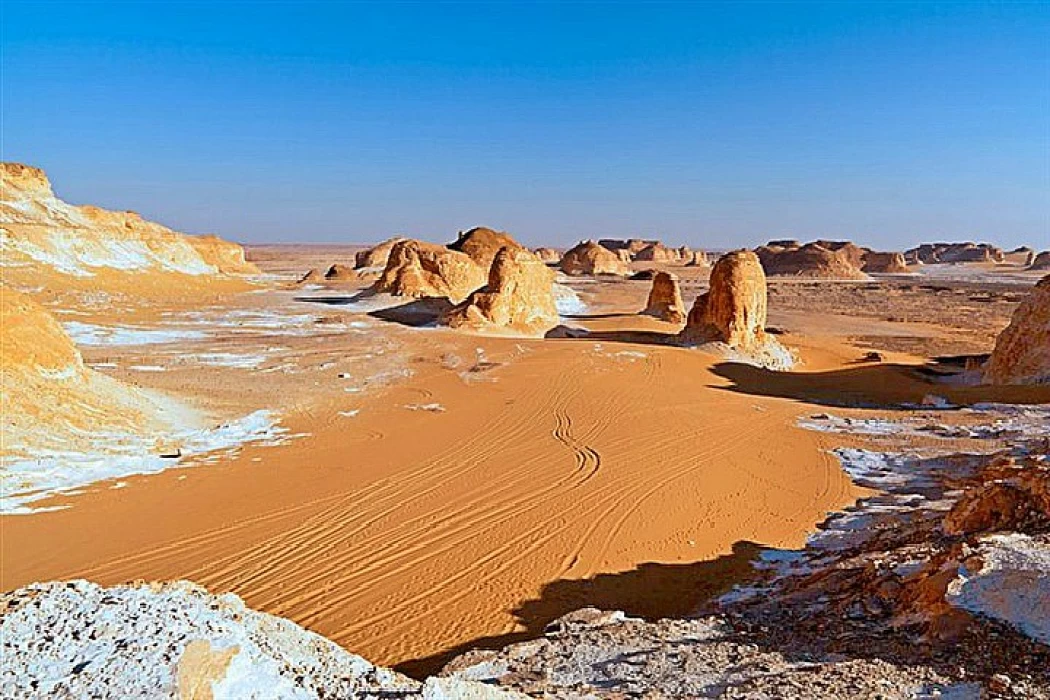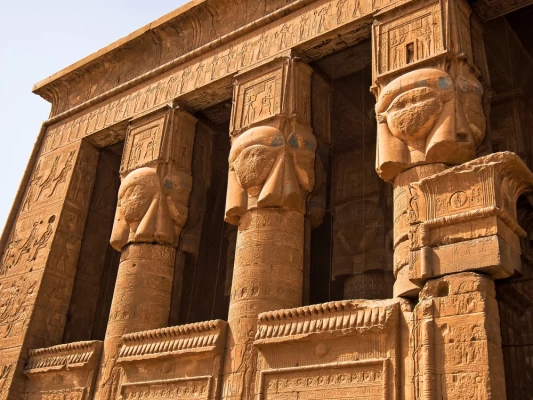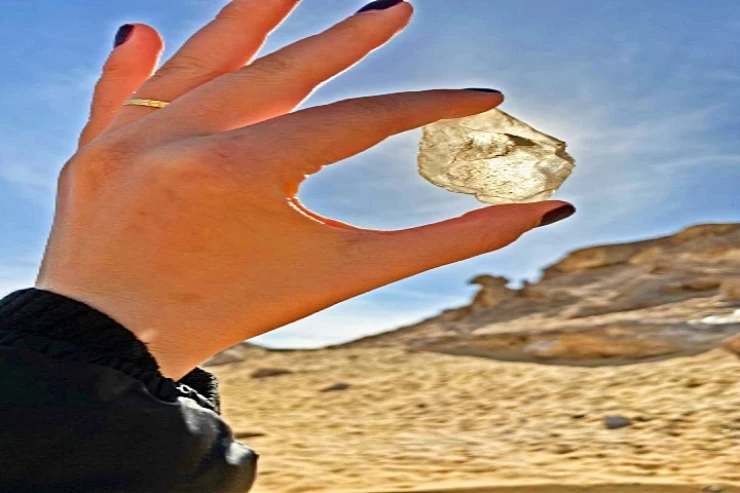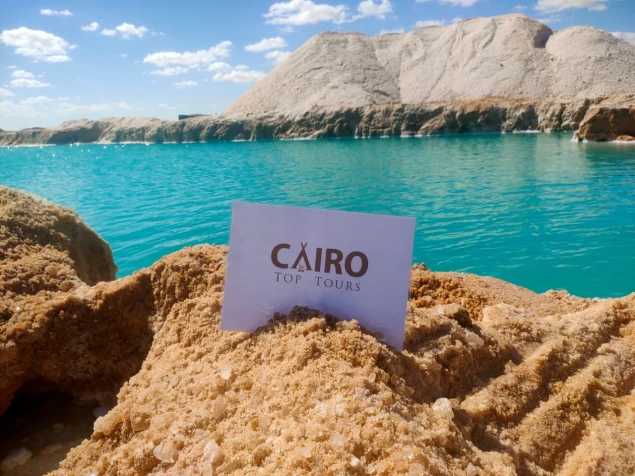
Discover The Valley of Agabat in Farafra Oasis
It is 627 km away from Cairo via the Cairo Oasis desert road. It became famous worldwide and was put under the tourist and scientific spotlight because of its location, history, the quality of its rocks and shapes, warm sunny faces, and the Crystal Mountains in the Farafra region.
Farafra Oasis is considered one village the most isolated villages from the oases of the New Valley, and Farafra Oasis is famous for its strong traditions and Customs.
It has the world-famous white desert, which is visited by tourists from all over the world, and which became a nature reserve in 2002 with an area of 3010 km.
History
The history of the Farafra Oasis dates back to the Pharaonic era, it was mentioned in a number of ancient Egyptian documents, especially since the tenth dynasty in the Twenty-First Century BC, and it was called "Ta-aht", meaning the land of the cow, and the ancient Egyptians gave it this nickname because of the abundance of pastures and cows in it.
In the first Christian era, Farafra was a haven for Christian Egyptians who the Romans persecuted, and many Christians fled to Farafra and left their mark in the areas of Pastor Abu said, Ain Abshway and Wadi Hanes, all of which are Egyptian Christian names. During many periods of ancient history, after the Islamic conquest of Egypt, the date and olive trade flourished between Farafra and the Nile Valley. Camel caravans carried the products of the OASIS to deirot on the Nile and returned with fabrics, tea, and everything produced by the land of the Nile Valley and Farafra. Farafra took some time to show its scientific importance, which prompted the Khedive Ismail Wali of Egypt to divert the journey of the famous German scientist Gerhard Rolf in 1874 to find out whether there was a river without water in the region or not, and Rolf tried to penetrate the Great Sand Sea, which is located to the west of Farafra and 300 km wide to Libya, he could not, and then headed north with a convoy of 100 camels and 90 men, including 12 Germans in various branches of science, whether geology-flora-fauna-archeology-astronomy-space and published his famous book three months in the Western Desert.
Tourism
the tourist is fascinated by, the wind has formed many rock patterns in the form of crow's nest and others in the form of white stone columns or chalk walls or conical in shape, and the area has become a pleasure for tourists to stand in it for long days enjoying its atmosphere It looks like a residential city from afar, and when you approach it, you think it's Snowy Mountains because of their whiteness, and if you stand in front of its rocks, you think it's statues made by a skilled artist. To the north of Farafra, on the way to the Bahariya oases, and 80 km away, there are beautiful white calcite crystals in a unique location that will make Farafra the throne of scientific and tourist tourism.
When most people hear the word "desert", they always remember the spacious valleys and the dunes but one of the most surprising views that you can see during the Cairo day tours to the western desert of Egypt is actually the white desert area in Egypt, which is about 45 km north of Farafra Oasis which is known as the land of the cow In the Pharaonic period.
The Ashgabat Valley is a place of magical beauty that is not repeated anywhere else in the Egyptian desert. It is located en route between the oases of Bahariya and Farafra, near Crystal Mountain and the White Desert.
The main characteristic of the valley of Ashgabat is the contrast between the large rocks of impressive white color and the golden sand that surrounds them. The landscape is so beautiful and one can hardly imagine another place like this in the whole world.
It is definitely one of the wonderful attractions that we can find on our trips to Egypt, especially in the Egyptian Oasis. That the mystique and charm of the desert, in a sea of sand that goes beyond the horizon line, make us feel small and eternally embarrassed by the greatness and lavishness of nature.
Following the route, past the Hyannis Valley, you reach the depression known as Ain al-Wadi. There, the golden sands are home to tall palms. Further along is the ancient water well of Ain Khadra, an unmissable postcard of desolation and beauty that characterizes this area: a palm stands alone on a hill surrounded by ceramics belonging to Roman, Coptic, and medieval times.
















